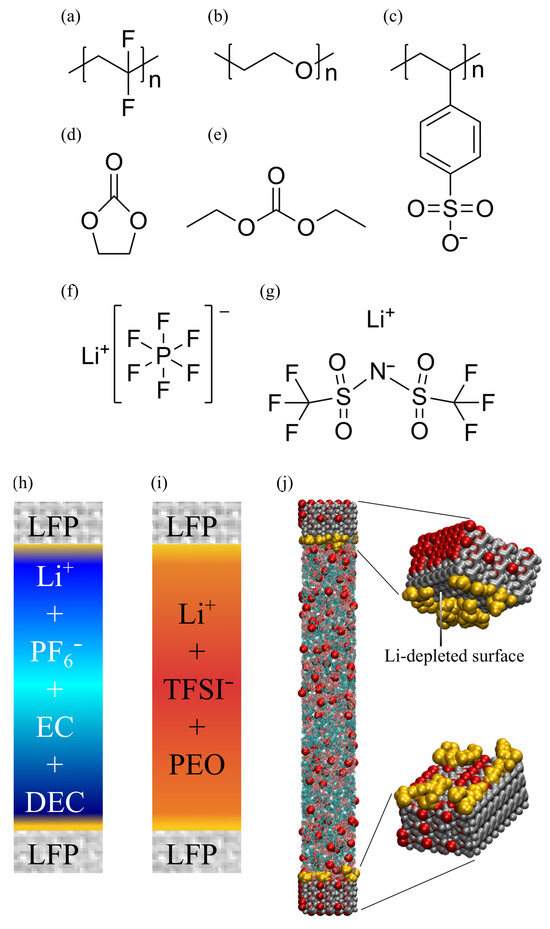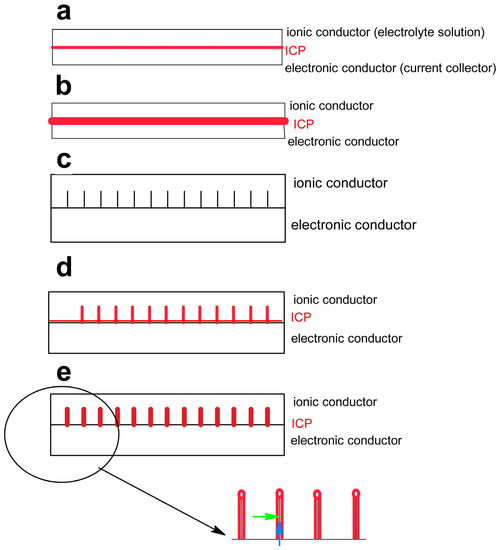Electrochemical-Storage Technology with Polymer Science
A topical collection in Polymers (ISSN 2073-4360). This collection belongs to the section "Polymer Applications".
Viewed by 5568Editors
Interests: energy storage technology; green chemistry; electrochemistry; energy materials; lithium-ion batteries; lithium-sulfur batteries
Special Issues, Collections and Topics in MDPI journals
Interests: secondary batteries; fuel cells; electrode materials; smart binder; electrolytes
Special Issues, Collections and Topics in MDPI journals
Topical Collection Information
Dear Colleagues,
The global growing demand for electric vehicles and large-scale energy storage has shed light on the significant challenge of energy storage technology with high energy density, long durability, and low cost. In the hope that advanced energy storage materials and devices can be achieved, polymers’ broad selections and wide functions have attracted increasing attention and are currently playing key roles in exploring new energy storage materials, function additives, and device components. The relative analysis and fabrication technologies in polymer science further create an in-depth study in investigating and understanding the relationship between material characteristics, analysis methods, and electrochemical performance. Accordingly, this Topical Collection of Polymers aims to broaden and deepen the scientific and technological knowledge with the most recent advances in the preparation, performance, and application of energy storage polymeric materials.
The purpose of this Topical Collection is to publish high-quality research papers and review articles focused on various aspects of polymer science in energy storage application. Potential topics include but are not limited to:
- Progresses in polymers in rechargeable lithium-ion batteries;
- Development of polymers for next-generation rechargeable batteries;
- Characterization on polymer characteristics in energy storage devices and materials;
- Fabrication, design, and optimization of polymer materials and application for energy storage technology.
Dr. Sheng-Heng Chung
Prof. Dr. Il Tae Kim
Collection Editors
Manuscript Submission Information
Manuscripts should be submitted online at www.mdpi.com by registering and logging in to this website. Once you are registered, click here to go to the submission form. Manuscripts can be submitted until the deadline. All submissions that pass pre-check are peer-reviewed. Accepted papers will be published continuously in the journal (as soon as accepted) and will be listed together on the collection website. Research articles, review articles as well as short communications are invited. For planned papers, a title and short abstract (about 100 words) can be sent to the Editorial Office for announcement on this website.
Submitted manuscripts should not have been published previously, nor be under consideration for publication elsewhere (except conference proceedings papers). All manuscripts are thoroughly refereed through a single-blind peer-review process. A guide for authors and other relevant information for submission of manuscripts is available on the Instructions for Authors page. Polymers is an international peer-reviewed open access semimonthly journal published by MDPI.
Please visit the Instructions for Authors page before submitting a manuscript. The Article Processing Charge (APC) for publication in this open access journal is 2700 CHF (Swiss Francs). Submitted papers should be well formatted and use good English. Authors may use MDPI's English editing service prior to publication or during author revisions.
Keywords
- polymer science
- energy storage technology
- electrochemistry
- energy density
- power density
- batteries
- supercapacitors
- electrodes
- electrolytes










